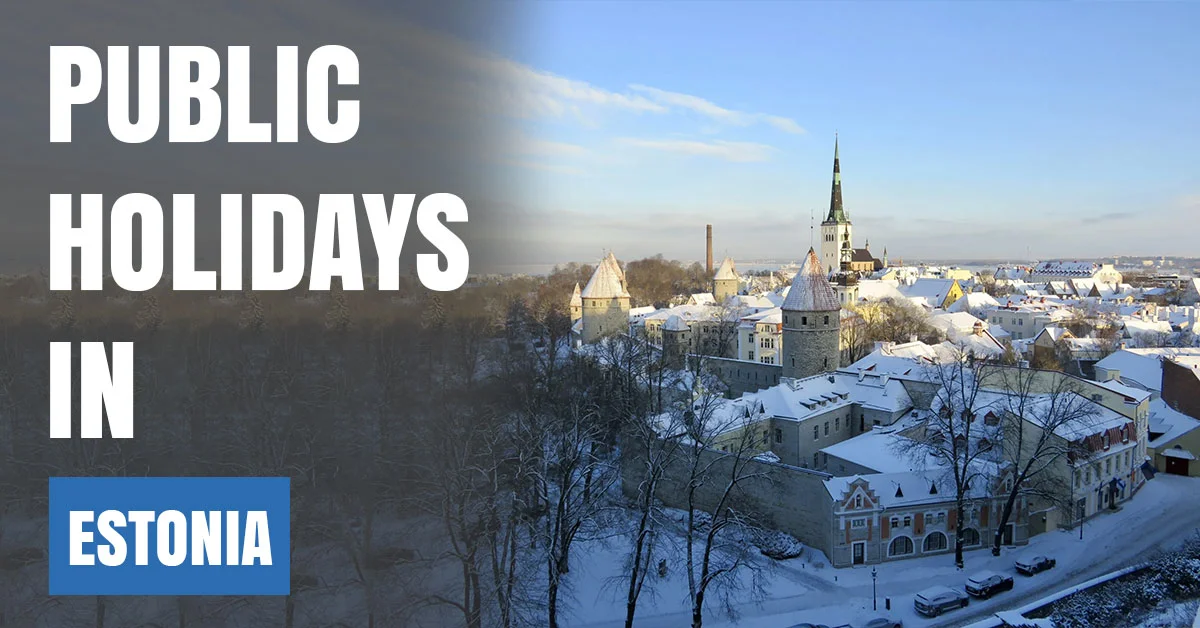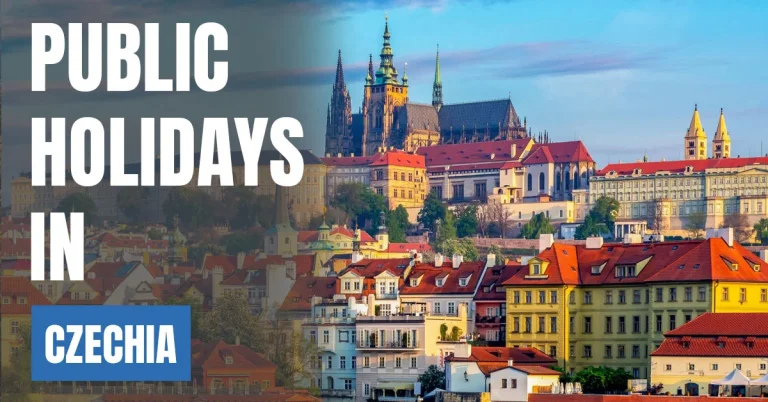Public Holidays in Estonia 2026 – National & Public Holidays

Estonia observes a set of national public holidays that reflect its history, Christian traditions, and folk culture. These days are legally non-working and are observed across the country, with many cultural rituals, parades, and family gatherings.
Overview of Public Holidays in Estonia
Public holidays in Estonia are regulated by law. They include Christian observances like Good Friday and Easter, as well as national days celebrating independence, restoration of independence, and midsummer traditions. Some observances (e.g., Epiphany, Flag Day) are noted culturally but are not always non-working holidays.
List of Public Holidays in Estonia (2026)
| Holiday | Date (2026) | Day | Remarks / Significance |
|---|---|---|---|
| New Year’s Day (Uusaasta) | January 1 | Thursday | First day of the Gregorian year. |
| Independence Day (Iseseisvuspäev) | February 24 | Tuesday | Commemorates Estonia’s declaration of independence in 1918. |
| Good Friday (Suur reede) | April 3 | Friday | Christian commemoration of Jesus’ crucifixion. |
| Easter Sunday (Ülestõusmispühade 1. püha) | April 5 | Sunday | Celebration of Jesus’ resurrection. |
| Spring Day / May Day (Kevadpüha) | May 1 | Friday | International Workers’ Day (non-working day). |
| Whit Sunday / Pentecost (Nelipühade 1. püha) | May 24 | Sunday | Christian feast 50 days after Easter. |
| Victory Day (Võidupüha) | June 23 | Tuesday | Marks victory in the Battle of Võnnu (1919). |
| Midsummer Day / St. John’s Day (Jaanipäev) | June 24 | Wednesday | Traditional midsummer celebration with bonfires. |
| Independence Restoration Day (Taasiseseisvumispäev) | August 20 | Thursday | Celebrates restoration of independence in 1991. |
| Christmas Eve (Jõululaupäev) | December 24 | Thursday | Evening before Christmas (public holiday). |
| Christmas Day (Esimene jõulupüha) | December 25 | Friday | Christian celebration of the birth of Jesus. |
| Boxing Day / Second Day of Christmas (Teine jõulupüha) | December 26 | Saturday | Second day of Christmas holiday. |
Note: Estonia does not shift holidays that fall on weekends to weekdays; dates remain fixed.
List of Public Holidays in Estonia (2025)
| Holiday | Date (2025) | Day | Remarks / Significance |
|---|---|---|---|
| New Year’s Day (Uusaasta) | January 1 | Wednesday | First day of the Gregorian year. |
| Independence Day (Iseseisvuspäev) | February 24 | Monday | Commemorates Estonia’s declaration of independence in 1918. |
| Good Friday (Suur reede) | April 18 | Friday | Christian commemoration of Jesus’ crucifixion. |
| Easter Sunday (Ülestõusmispühade 1. püha) | April 20 | Sunday | Celebration of Jesus’ resurrection. |
| Spring Day / May Day (Kevadpüha) | May 1 | Thursday | International Workers’ Day (non-working day). |
| Whit Sunday / Pentecost (Nelipühade 1. püha) | June 8 | Sunday | Christian feast 50 days after Easter. |
| Victory Day (Võidupüha) | June 23 | Monday | Marks victory in the Battle of Võnnu (1919). |
| Midsummer Day / St. John’s Day (Jaanipäev) | June 24 | Tuesday | Traditional midsummer celebration. |
| Independence Restoration Day (Taasiseseisvumispäev) | August 20 | Wednesday | Celebrates restoration of independence in 1991. |
| Christmas Eve (Jõululaupäev) | December 24 | Wednesday | Evening before Christmas (public holiday). |
| Christmas Day (Esimene jõulupüha) | December 25 | Thursday | Christian celebration of the birth of Jesus. |
| Boxing Day / Second Day of Christmas (Teine jõulupüha) | December 26 | Friday | Second day of Christmas holiday. |
Religious and Cultural Significance
Christian holidays such as Good Friday, Easter, and Christmas reflect Estonia’s Christian heritage, though many Estonians are secular. Midsummer Day (Jaanipäev) is deeply rooted in folk tradition and marked with bonfires, singing, and nature rituals. National days like Independence Day and Restoration of Independence commemorate pivotal moments in Estonian statehood.
Public Observances and Closures
On public holidays, government offices, banks, schools, and many businesses close nationwide. In cities such as Tallinn, Tartu, and Pärnu, cultural events, parades, and concerts are common. Midsummer celebrations are especially popular in rural areas.
Frequently Asked Questions (FAQs)
How many public holidays does Estonia have?
Estonia observes 12 legally non-working public holidays each year.
Does Estonia shift a holiday if it falls on a weekend?
No. Estonia does not move public holidays that fall on weekends to other weekdays.
What is Jaanipäev (Midsummer Day) in Estonia?
Jaanipäev (June 24) is one of Estonia’s most cherished cultural holidays, celebrated with bonfires, folk songs, and traditional gatherings.
Why is Victory Day celebrated on June 23?
Victory Day commemorates Estonia’s victory in the Battle of Võnnu in 1919 during the War of Independence.
Conclusion
Public holidays in Estonia reflect a balanced blend of national pride, Christian observance, and ancient folk traditions. From independence commemorations to midsummer celebrations, these holidays shape the rhythm of Estonian life each year.
Also Explore: Public Holidays in Eritrea




